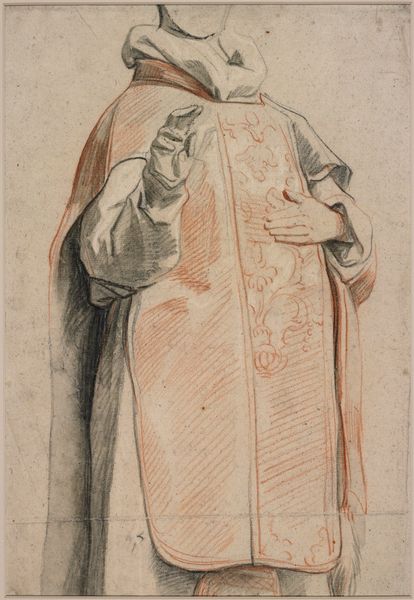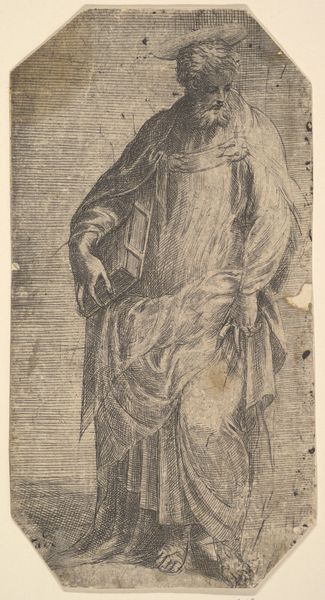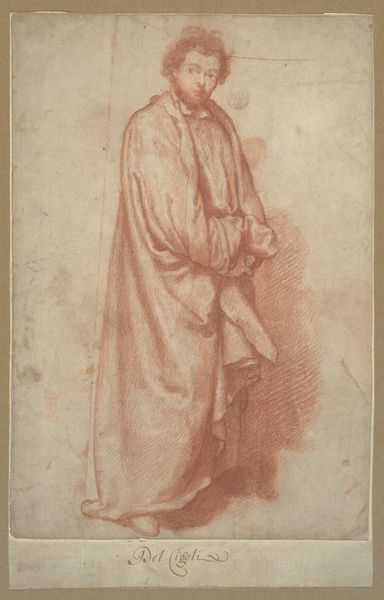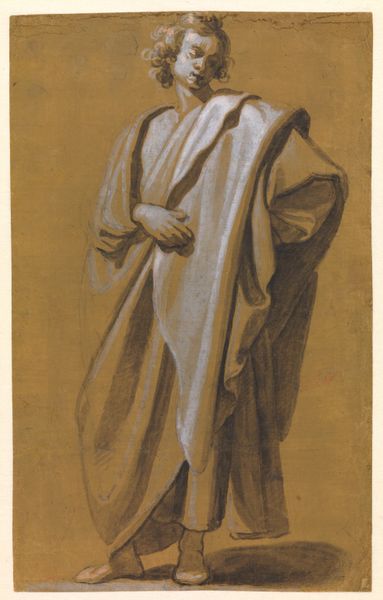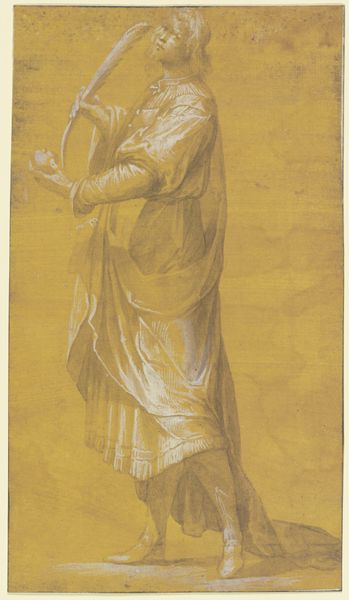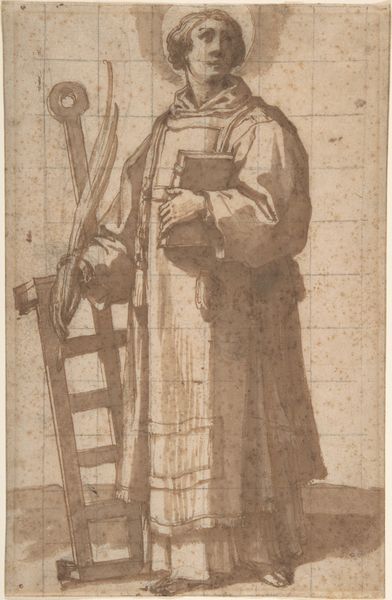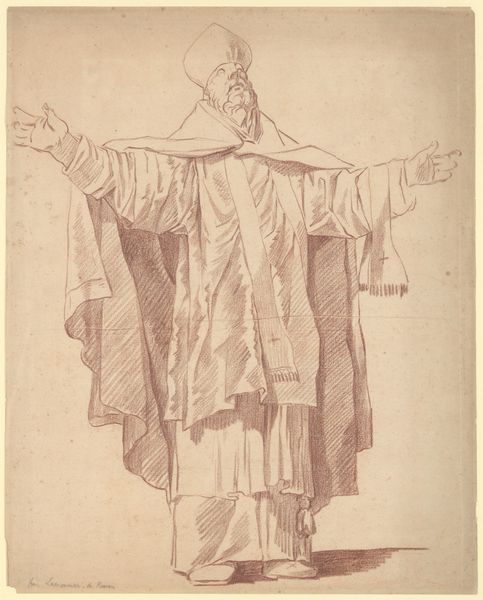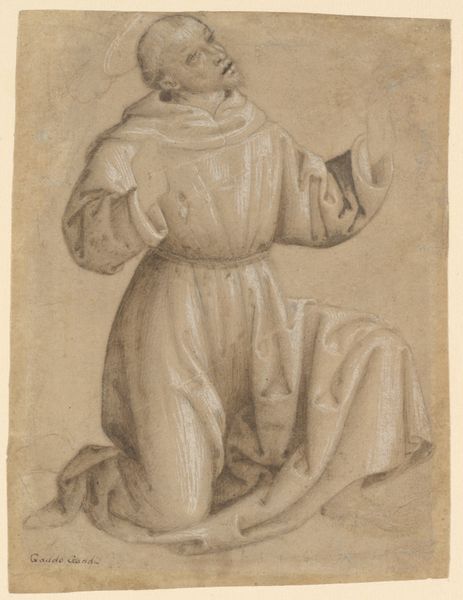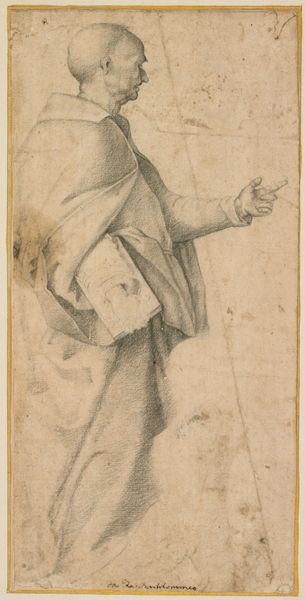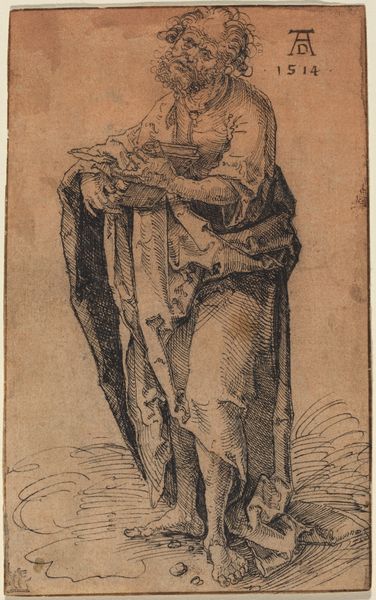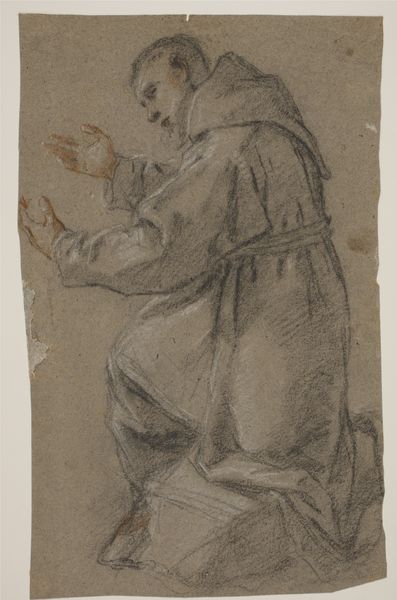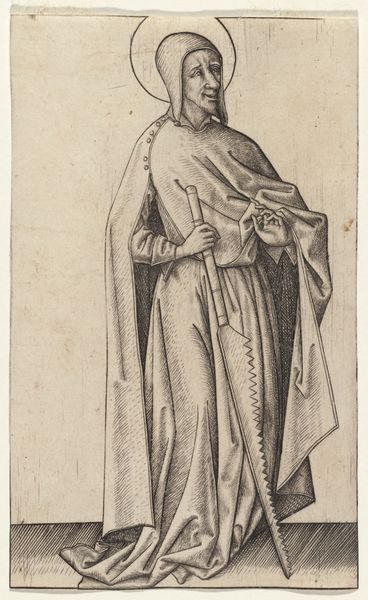
drawing, print, charcoal
#
portrait
#
drawing
# print
#
charcoal drawing
#
figuration
#
oil painting
#
portrait drawing
#
charcoal
#
history-painting
#
italian-renaissance
Dimensions: 18-1/8 x 10-9/16 in. (46.1 x 26.9 cm)
Copyright: Public Domain
Editor: This is "Saint Charles Borromeo," created sometime between 1575 and 1662 by Giovanni Battista Crespi, also known as Il Cerano. It looks like it's charcoal on paper, and there's a print version as well. What strikes me is how the robes are rendered with such luminosity given the medium. How do you read this portrait? Curator: Considering Crespi’s meticulous handling of charcoal, we see not just an image of Borromeo, but also a careful labor. Observe the textures he coaxes from what is essentially burnt wood – the sheen of the saint’s vestments, the subtle gradations defining his face. This act of transforming such a base material into an object of reverence inherently challenges the separation between high art and craft. Editor: That's interesting. I was focused on the artistic skill, but your perspective shifts it to the materials themselves and the work involved. What about the context of the materials? Was charcoal readily available at the time? Curator: Indeed. Charcoal was relatively inexpensive and easily sourced, unlike precious pigments or metals. Crespi’s choice may be less about affordability and more about accessibility – a material used commonly in workshops, for preparatory sketches. Using it for a finished portrait, especially of a saint, implicates a larger discussion on value, labor, and consumption in art production. The lines are blurred between sketch and final product, prompting us to question what is considered precious or valuable in art, and why. What does that make you think about the role of patronage here? Editor: Hmm, that makes me think. Maybe Crespi was making a subtle comment about the church and wealth. It's powerful to think about the art from a manufacturing, consumption, and production perspective. Curator: Precisely! By focusing on the tangible elements, we unravel the cultural ideologies embedded within this portrait.
Comments
No comments
Be the first to comment and join the conversation on the ultimate creative platform.
